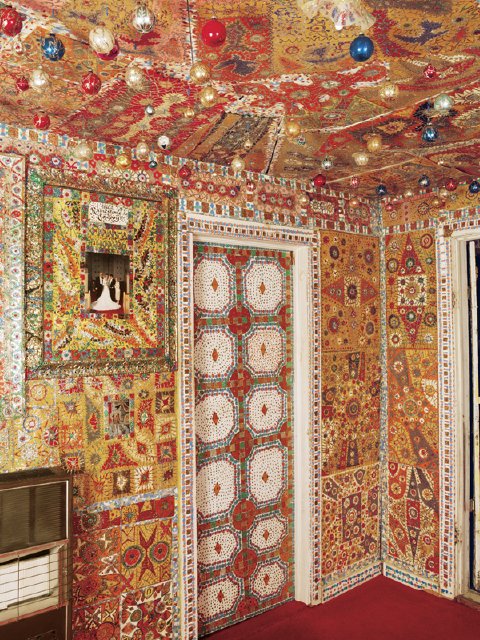

Photo by Michael Williamson, 1980
Loy Bowlin was born in 1909 in rural Franklin County, Mississippi, and lived in poverty for much of his life. He married Ina Mae Mitchell in 1933, and the couple farmed and scrapped metal to get by. After their divorce in the 1950s, Bowlin struggled with depression and sought comfort through his Christian faith.
In 1975 Bowlin began to adopt a new persona to lift his spirits, inspired by Glen Campbell’s hit record Rhinestone Cowboy. Dressed head to toe in dazzling outfits he painstakingly embellished with rhinestones and glitter, he performed daily in local shopping plazas, fairs, and flea markets, playing the harmonica, dancing, and telling jokes. Calling himself “The Original Rhinestone Cowboy,” he pursued fame in an adorned 1967 Cadillac.







In the mid-1980s, as he approached his eighties and was no longer able to go out and entertain, he redirected his creative energy to his house in McComb, Mississippi, transforming it into the Beautiful Holy Jewel Home. In a project that took about five years to complete, he covered every inch of the interior, and part of the exterior, with daubs of bright paint and intricate patterns of cutout paper, rhinestones, glitter, tinfoil, tinsel garlands, Christmas ornaments, and collaged photographs and magazine illustrations.
After Bowlin’s death in 1995, Houston artist and collector Katy Emde acquired the house under the stipulation that she remove it from the property. Emde documented and dismantled the home, and Kohler Foundation, Inc., acquired all the components in 1998. The foundation gifted the home along with many of Bowlin’s hats, suits, and furniture pieces to the John Michael Kohler Arts Center.
Visit the Loy Bowlin Collection at the John Michael Kohler Arts Center
Long form articles:

Sublime spaces and visionary worlds : built environments of vernacular artists.
Umberger, Leslie & Erika Doss .
Published by Princeton Archit.Press (2007)



















